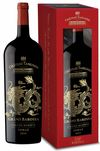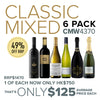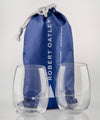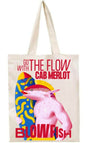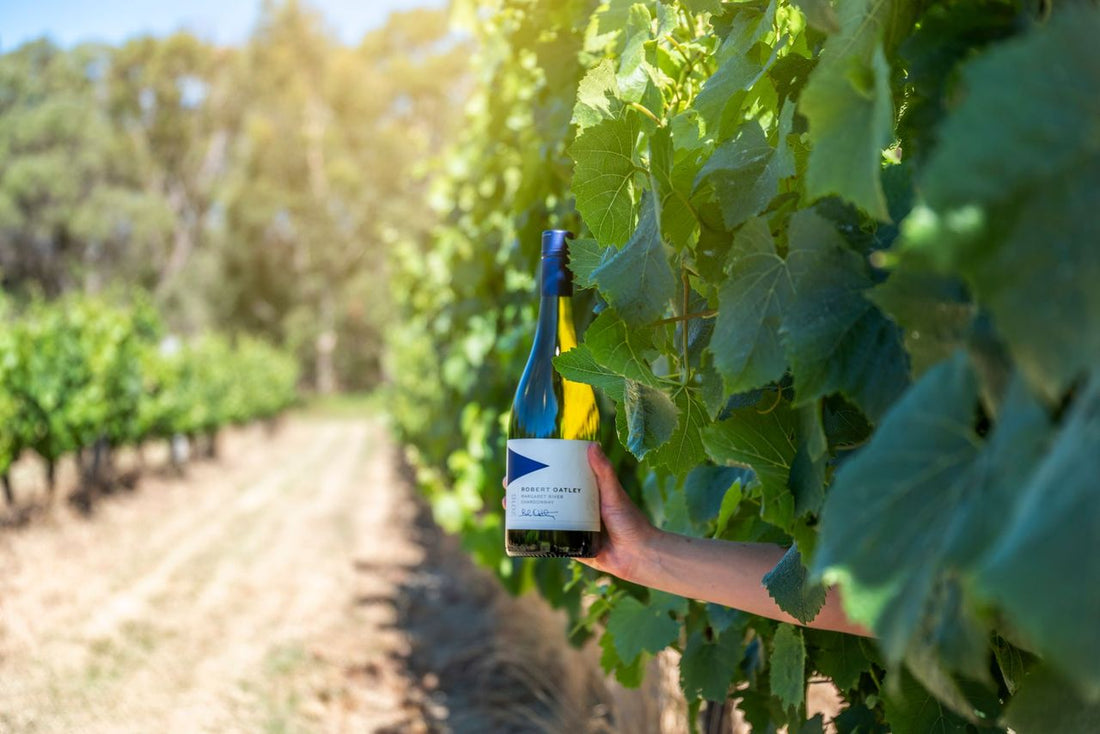Often used as an aperitif & a favoured tipple in warmer seasons, white wine can be made into sweet, sparkling or most commonly dry styles. Whilst many different varietals and winemaking techniques are employed around the world, it is commonly made from white grapes, fermented without skins, in stainless steel tanks to preserve freshness and the delicate flavours associated with white wines. Matched generally with lighter dishes, such as seafood, salad and white meat, white wine can range from pale yellow, bright and aromatic to deep golden yellow and tremendously full bodied.

How long can you keep white wine?
Light style white wines like Riesling & Sauvignon Blanc along with Rose will keep for 5-7 days if they are resealed and refrigerated soon after being opened. More full bodied wines such as Chardonnay will keep for 3-5 days resealed and refrigerated.

What is the difference between red and white wine?
Both red and white wines are comprised of tannins, acidity, sugar and alcohol, in varying proportions. The main distinction between reds and whites is in how they’re created. The grapes used for red and white wines are typically different colours, red wine grapes are darker and have a lot of skin pigment which is used to colour the wine. In white wine making, the skins, seeds & stems are separated from the juice prior to fermentation and the ferment itself is performed at lower temperatures than red in stainless steel tanks, to prevent the delicate flavour of white wine from being lost.

What does wine taste like when it goes bad?
If a wine tastes poorly or is not what you were expecting, a good start is to refer to the rear label of the bottle which often suggests the flavours you ought to encounter then sniff & taste the wine. If you detect any moldy, wet cardboard, musty or damp smells or if it smells like fortified wine and isn’t fortified wine, if it smells of excessively cooked fruit, contains a heavily raisined smell, if there's burnt candy, strong vinegar, sulphur or rotten egg smells - these all can be signs of spoiling. Equally if on tasting, your wine has no fruit flavours, tastes of vinegar, contains a chemical flavour or is flat or lifeless then its likely to be suffering from a quality issue. In most cases, a faulty wine is not harmful, just unpleasant.

How can you tell if a wine is corked?
When a wine is referred to as corked, it speaks to a presence of a particular chemical called trichloroanisole or TCA which is reminiscent of smells such as damp cardboard, wet hair and on the palate creates an absence of fruit flavours. It is NOT bits of cork floating within the wine. Wine bottled under screw cap cannot be corked because the chemical TCA which causes cork taint is found most commonly in the bark from Cork Trees, used to seal wine bottles. Screw cap wines can however be affected by other wine faults, and if the metal screw cap is 'dented' they can be prone to oxidasation due to the seal being compromised by the dent. A wine can be slightly or overtly corked as TCA can be present in concentrations of simply a couple of components per trillion parts or higher. Apples and water are other examples of natural products which can also be affected with TCA, the same chemical which causes cork taint in wines.

Is white wine good for your health?
Similar to red wine, it's all about quality not quantity. In a standard serving of 175ml served with the main meal, white wine is believed to be beneficial to having a healthy respiratory system, however, white wine is not believed to have the same anti oxidant qualities as red wine, because those properties are found in the skin of red wine grapes.

Are white wine grapes red?
Yes they can be, as an example, Pinot Grigio/Pinot Gris grapes are naturally a greyish pink (hence the Blush colour in some of these wines) and Champagne is created from a combination of white & red grapes; Pinot Noir and Pinot Meunier are both red and white grape Chardonnay. To ensure no colour taints the wine, the winemakers minimise skin contact during the fruit crush and also remove the skins after the crush. Leaving a small amount of the crushed wines in contact with the skins produces a Rose Style of Wine.

How is white wine is served?
White wines are best served between nine and twelve degrees C. Wines with high acid for example a New Zealand Sauvignon Blanc can to be enjoyed a little cooler at ten degrees, while an oaked, rich, full bodied chardonnay can be served at twelve degrees. It's best not to over chill wine otherwise it can be difficult to detect the fragile aromas or flavours of the wine as very low temperatures can mute the delicate notes in a white wine.

What kind of wine goes with seafood?
When food matching whilst we usually focus on the main protein, it's ideal to think about the flavour profile of the total dish especially with any sauces it's served with. This in mind, fish can be served with several varietals and types of wine, from a crisp Chablis through to lighter forms of red like Rose, Pinot Noir or Grenache depending on the type of fish. With a meaty fish like Sea Bass with thyme and lemon & Chardonnay can be a good match and stronger flavored fish like mackerel take well to Rose style. Other great matches include Fresh Oysters and Dry Riesling, Crab and Fennel dishes with Champagne, Pinot Gris/Grigio with sushi and Sauvignon Blanc with Shellfish. Scallops depend a little on the serving suggestion but when combined with creamy flavoured sauces also match well with a buttery chardonnay.

What white wine has the least amount of sugar?
Any extra-dry or bone dry wines like non sweet riesling, Italian Pinot Grigio and Brut style Champagnes have lower sugar than others. In some cases, the higher the alcohol content, the lower the sugar. High Acid in a white wine, can also make a wine seem dryer as the acid makes it more difficult to detect sugar levels as it tends to cancel out the sweetness on our palates.

Can white wine be frozen?
Yes, however, the flavour is likely to suffer as a result of changes that occur as part of the freezing process. While some claim that these changes cause minimal harm to the wine, the actual fact is that structure is irreversibly altered. If you do accidentally freeze a bottle of wine, move it back into the refrigerator to defrost slowly, then drink. It is advisable not to try and heat a frozen bottle of wine as the sudden extreme temperature changes can cause the bottle can shatter. Top Tip, if you would like to fast chill some wine pop the bottle into the coldest part of the freezer for reduction of approx half a degree C per hour and set the timer on your phone to cue you to retrieve it.






